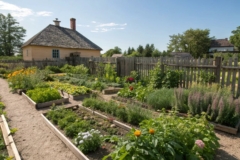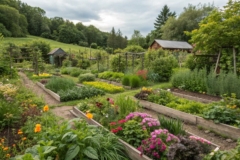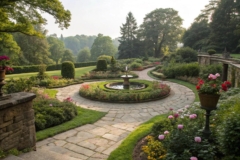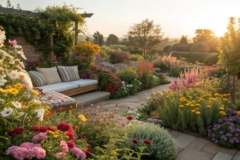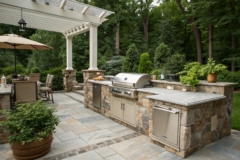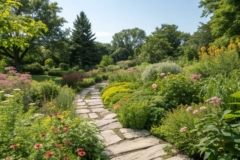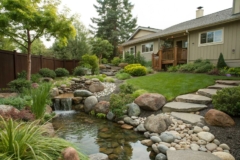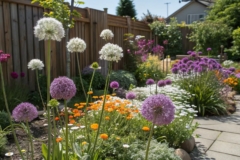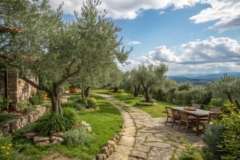1. Compartmentalized Planting Plots
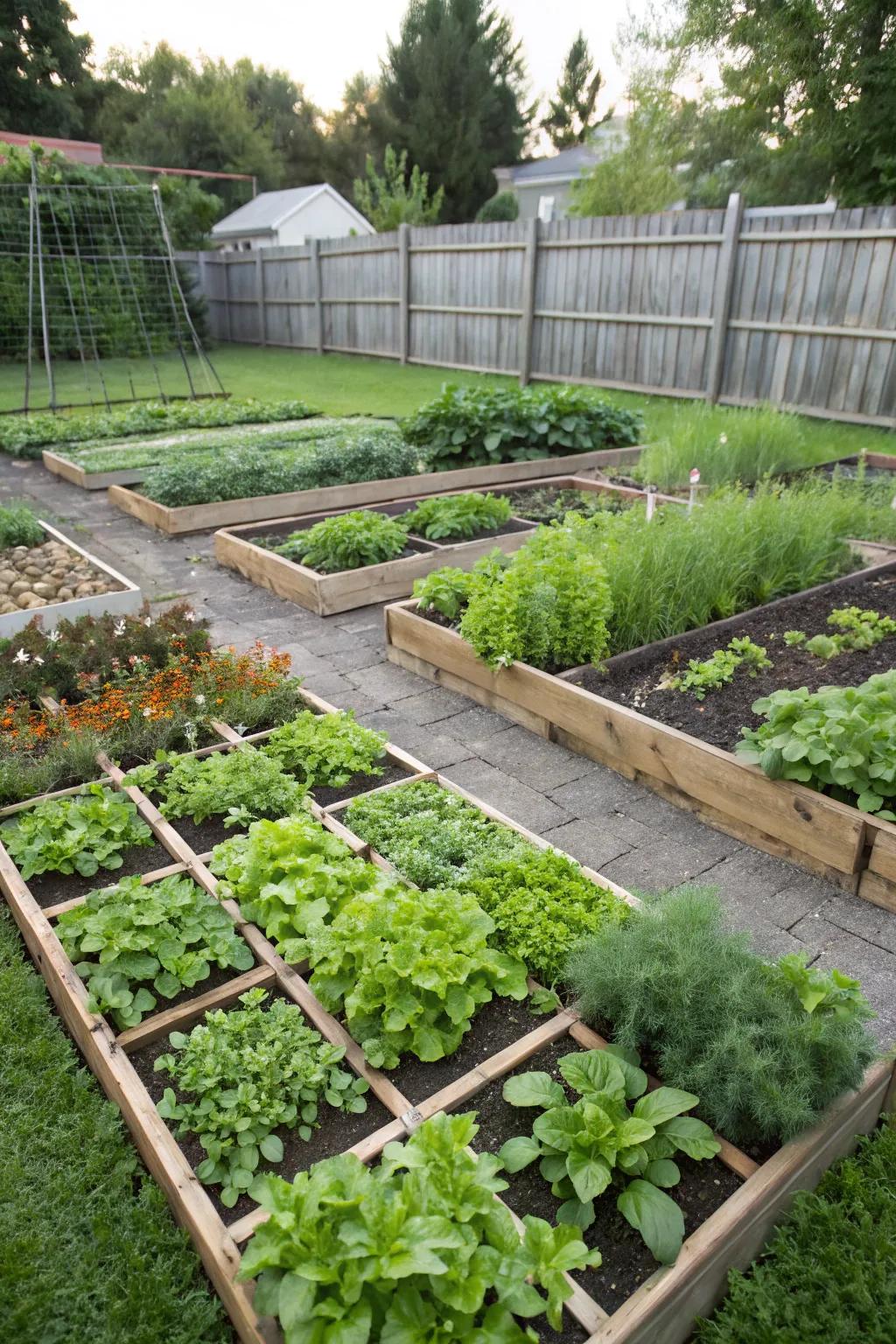
Divide your garden into sections for different plant types, making it easier to manage and care for your crops. In my garden, this method helps me rotate crops and keep everything orderly.
Useful items to consider:
- Raised Garden Bed Kit: Organize your garden efficiently with a durable raised garden bed kit. Start planting today!
- Garden Divider Panels: Easily separate plant types using sturdy garden divider panels. Enhance your gardening management now!
- Soil pH Testing Kit: Ensure optimal growth by testing your soil’s pH with this easy-to-use kit. Get precise results!
2. Proximity to Home for Convenience
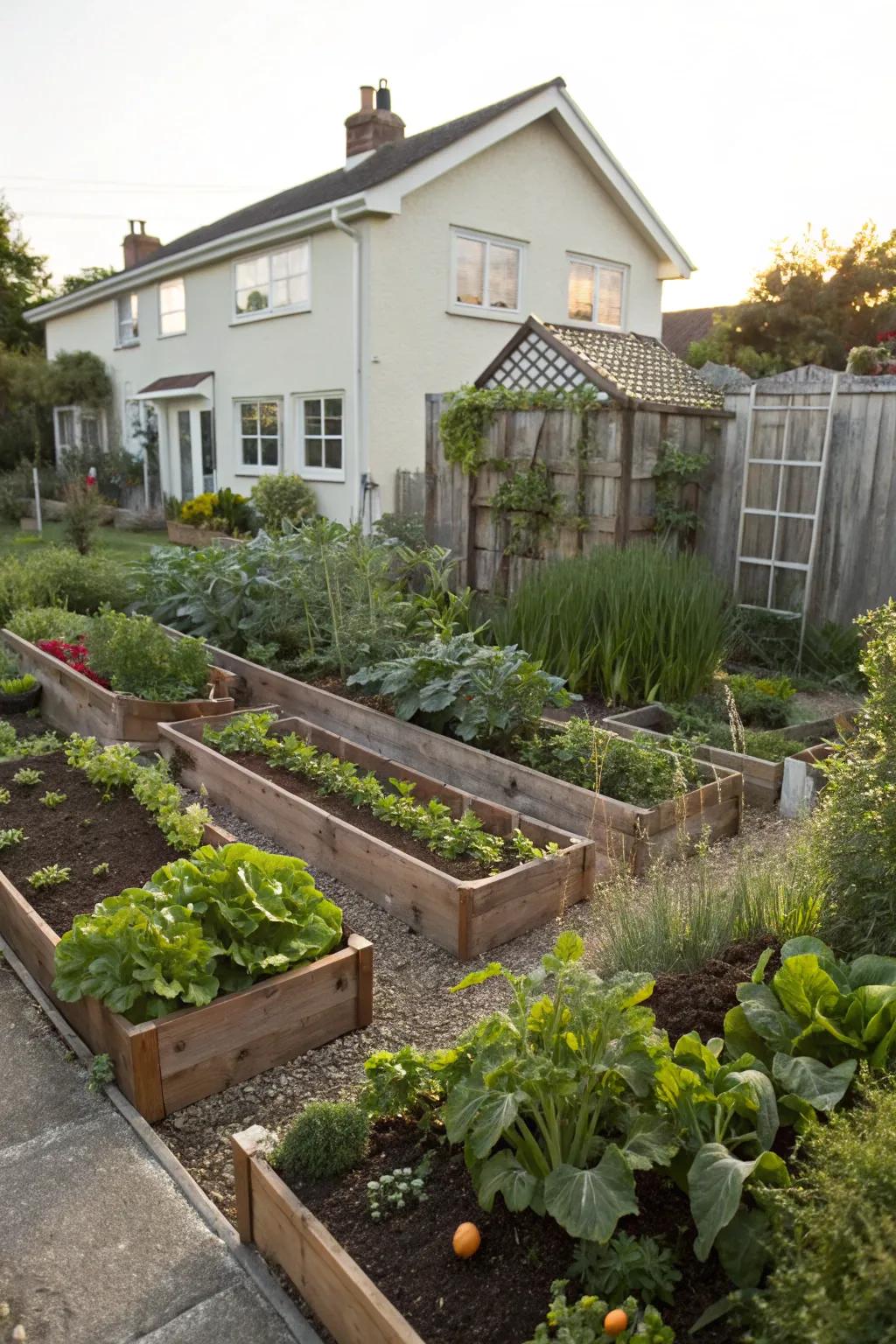
Place your kitchen garden close to your home for easy access to fresh ingredients. I love being able to step outside and pick herbs right before cooking.
Explore these options:
- Raised Garden Bed Kit: Enhance your garden’s accessibility with a raised bed. Easy to install next to your home.
- Garden Tool Set with Tote: Keep essential tools handy for quick harvests. Store conveniently near your garden space.
- Decorative Garden Path Lights: Illuminate your path to fresh ingredients. Stylish solar-powered lights are easy to install.
3. The Classic Raised Bed Setup
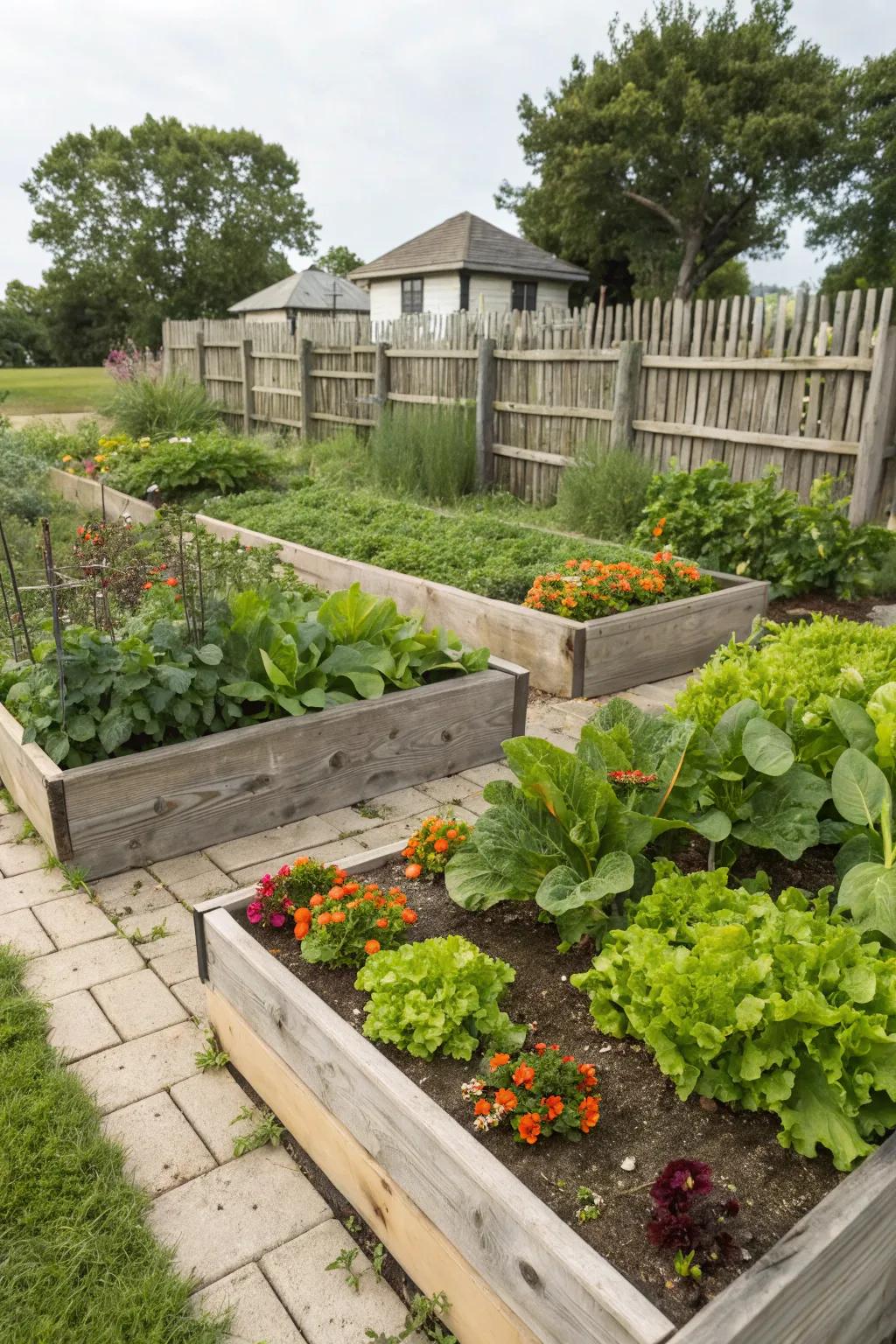
Raised beds are a game-changer for your kitchen garden, offering both organization and easy maintenance. In my own garden, I love how they keep everything tidy and accessible, making it a breeze to harvest fresh veggies.
These products might help:
- Wooden Raised Garden Bed Kit: Secure your plants with an easy-to-assemble wooden raised bed, ensuring an organized garden.
- Heavy Duty Gardening Gloves: Protect your hands with durable gloves when planting and maintaining your raised beds effortlessly.
- Organic Vegetable Fertilizer: Boost plant growth with a nutrient-rich organic fertilizer, ideal for your raised garden setup.
4. Pathways with Purpose
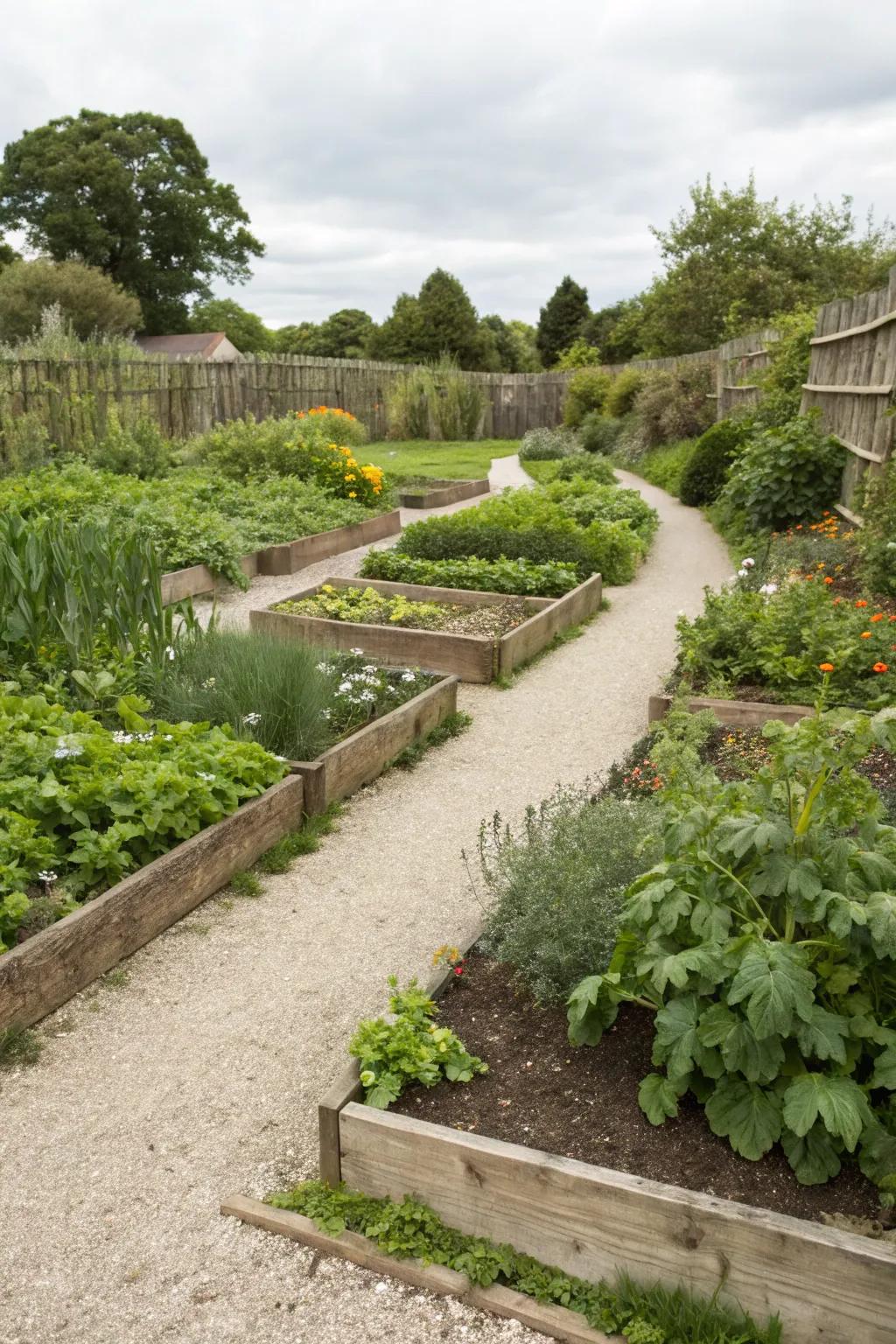
Creating clear pathways not only defines your garden but also makes it easy to navigate while tending to your plants. I personally enjoy the rustic charm that gravel paths add to my garden.
A few choices to try:
- Garden Gravel for Pathways: Enhance your garden’s charm with rustic gravel pathways for easy navigation and style.
- Wooden Raised Garden Beds: Organize your plants beautifully with durable wooden raised beds for a structured garden look.
- Garden Edging Stones: Define your garden paths elegantly using decorative edging stones for a polished appearance.
5. Sunken Beds for Unique Design

Consider sunken beds for a different approach to planting, allowing for moisture retention and wind protection. This unique design can give your garden an interesting twist.
Possibly helpful picks:
- Raised Garden Bed Kit: Enhance your garden with this easy-to-assemble raised bed, perfect for sunken bed designs.
- Garden Soil Moisture Meter: Monitor and maintain optimal soil moisture levels in your sunken beds effortlessly.
- Landscape Fabric and Stakes: Keep weeds at bay and improve soil health with durable landscape fabric for your sunken beds.
6. Natural Materials for a Cohesive Look
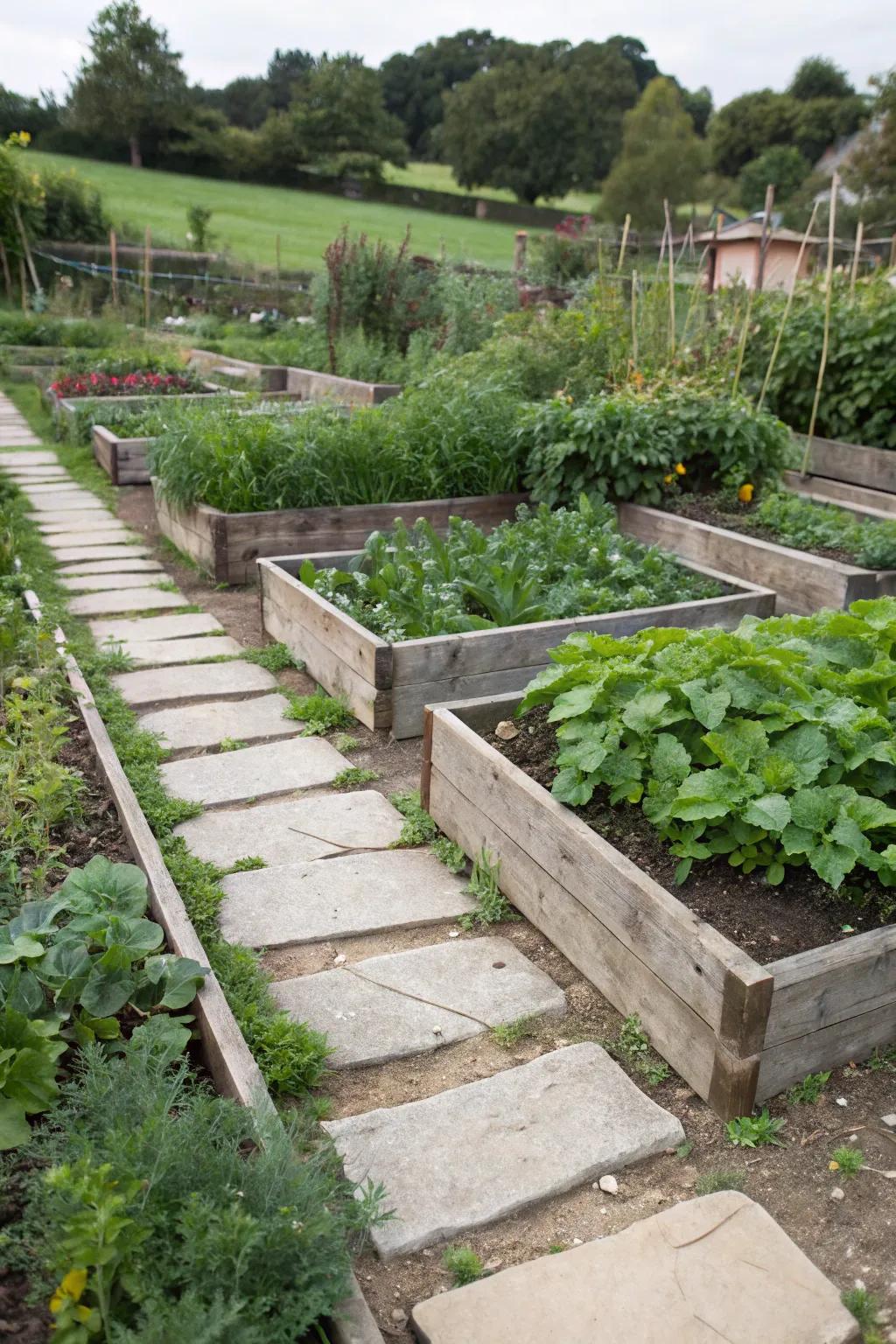
Use natural materials like wood and stone for your garden beds and paths to create a seamless blend with the surroundings. In my garden, these elements add a rustic charm that’s hard to beat.
You might like:
- Wooden Raised Garden Bed Kit: Enhance your garden’s rustic charm with this durable wooden raised bed kit. Set up effortlessly.
- Natural Stone Paver Set: Create beautiful garden paths with these sturdy stone pavers. Blend seamlessly with nature.
- Wooden Garden Pathway Planks: Design an inviting garden walkway with these easy-to-install wooden planks. Add rustic appeal.
7. Extend Seasons with Greenhouses

Incorporate a small greenhouse to extend your growing season and experiment with different plants. I’ve found that it’s a wonderful way to enjoy fresh produce even in cooler months.
These products might be useful:
- Compact Greenhouse Kit: Set up this compact greenhouse to grow plants year-round in your kitchen garden.
- Raised Garden Bed with Cover: Use this raised bed with a cover to protect your plants and enhance growth.
- Greenhouse Shelving Unit: Add this sturdy shelving unit to organize and maximize your greenhouse space effectively.
8. DIY Cold Frames
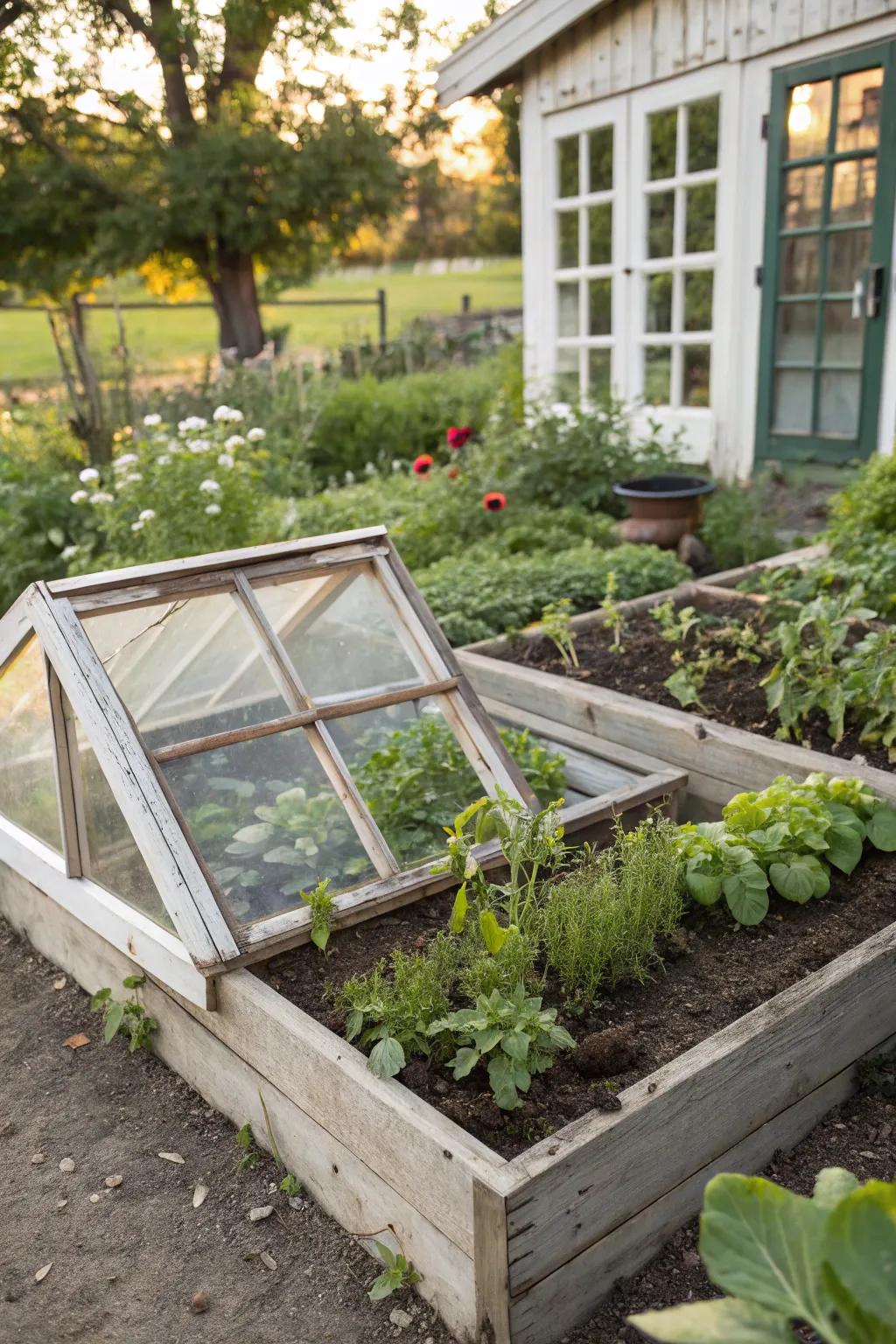
Build a DIY cold frame to protect plants from unexpected frosts and extend your growing season. I’ve used old windows to create charming and functional cold frames.
A few helpful options:
- Reclaimed Wood Panels: Craft a rustic cold frame with these reclaimed wood panels, adding charm to your garden.
- Glass Window Panes: Protect your plants from frost by repurposing these durable glass window panes for cold frames.
- Hinge Set for Frames: Ensure your cold frame is sturdy and functional with this easy-to-install hinge set.
9. Defined Spaces with Fences

Use natural or wooden fences to protect and define your garden space. In my garden, a simple fence adds both security and a touch of rustic style.
A few things you might like:
- Rustic Wooden Garden Fence Panels: Enhance your garden with rustic charm while keeping it secure. Perfect for a natural look.
- Decorative Wooden Garden Edging: Define your garden’s borders with stylish wooden edging. Adds rustic appeal effortlessly.
- Natural Bamboo Privacy Screen: Add seclusion and natural beauty to your garden with bamboo privacy screens. Ideal for any space.
10. Aesthetic Symmetry for Visual Appeal
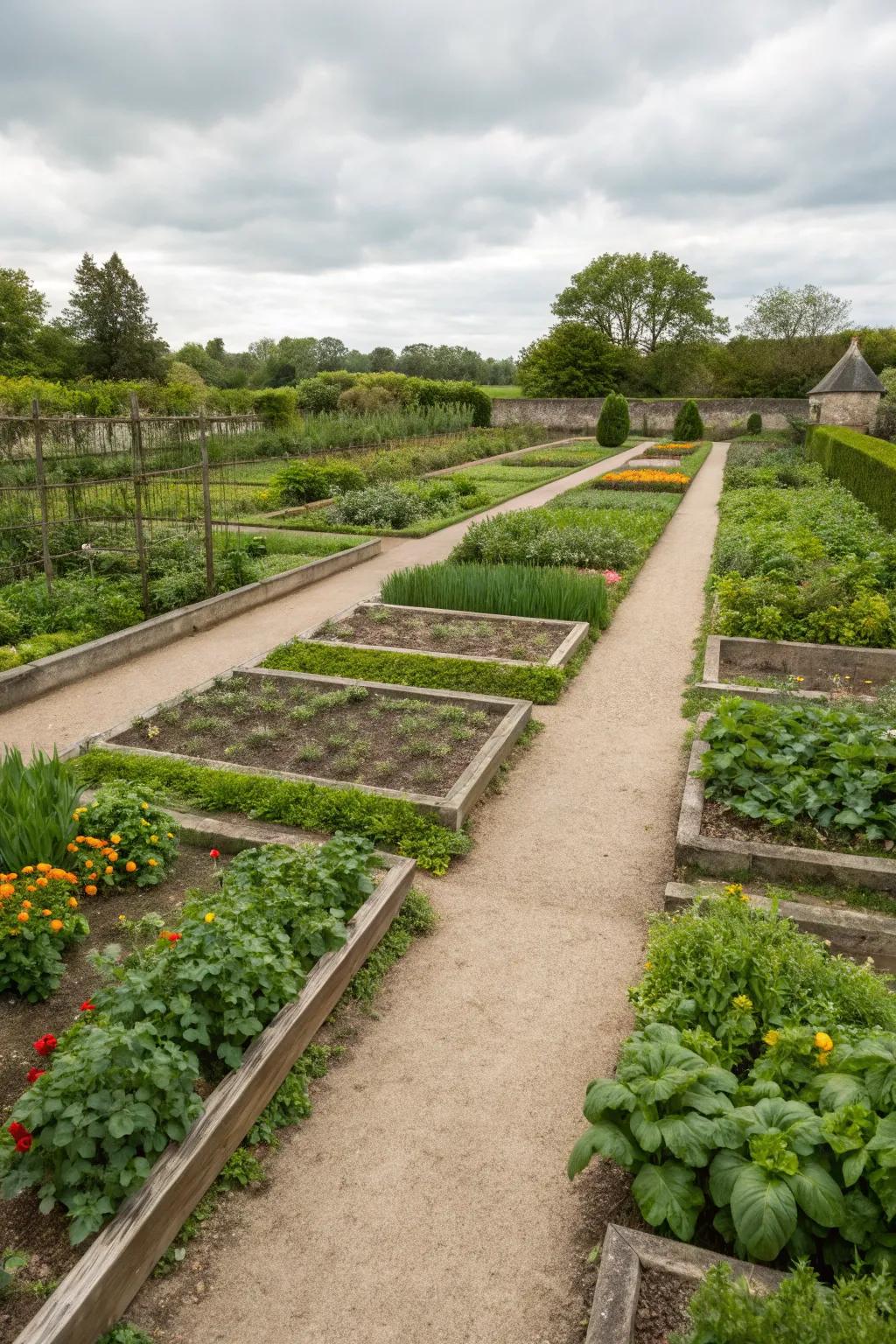
Design your garden with symmetrical arrangements to create a sense of balance and harmony. It’s a technique I use to make my garden not just functional, but also pleasing to the eye.
Products that could assist:
- Raised Garden Bed Kit: Enhance garden symmetry with modular raised beds, creating organized and appealing plant arrangements.
- Decorative Garden Path Border: Define paths with attractive borders to add balance and structure to your symmetrical garden design.
- Symmetrical Garden Planter Set: Use matching planter sets to maintain symmetry and harmony throughout your garden space.
11. Use Mirrors for Illusion

Strategically place mirrors to create the illusion of a bigger garden space. In my garden, mirrors reflect light and add depth, making the space feel more expansive.
Give these a look:
- Outdoor Acrylic Garden Mirrors: Enhance your garden with durable, weather-resistant mirrors that create a sense of depth and space.
- Framed Rectangular Garden Mirrors: Add elegance and depth to your outdoors with beautifully framed mirrors, perfect for garden spaces.
- Weatherproof Mirror Panels: Create an illusion of a larger garden with these versatile weatherproof mirror panels.
12. Herb Spirals for Efficiency
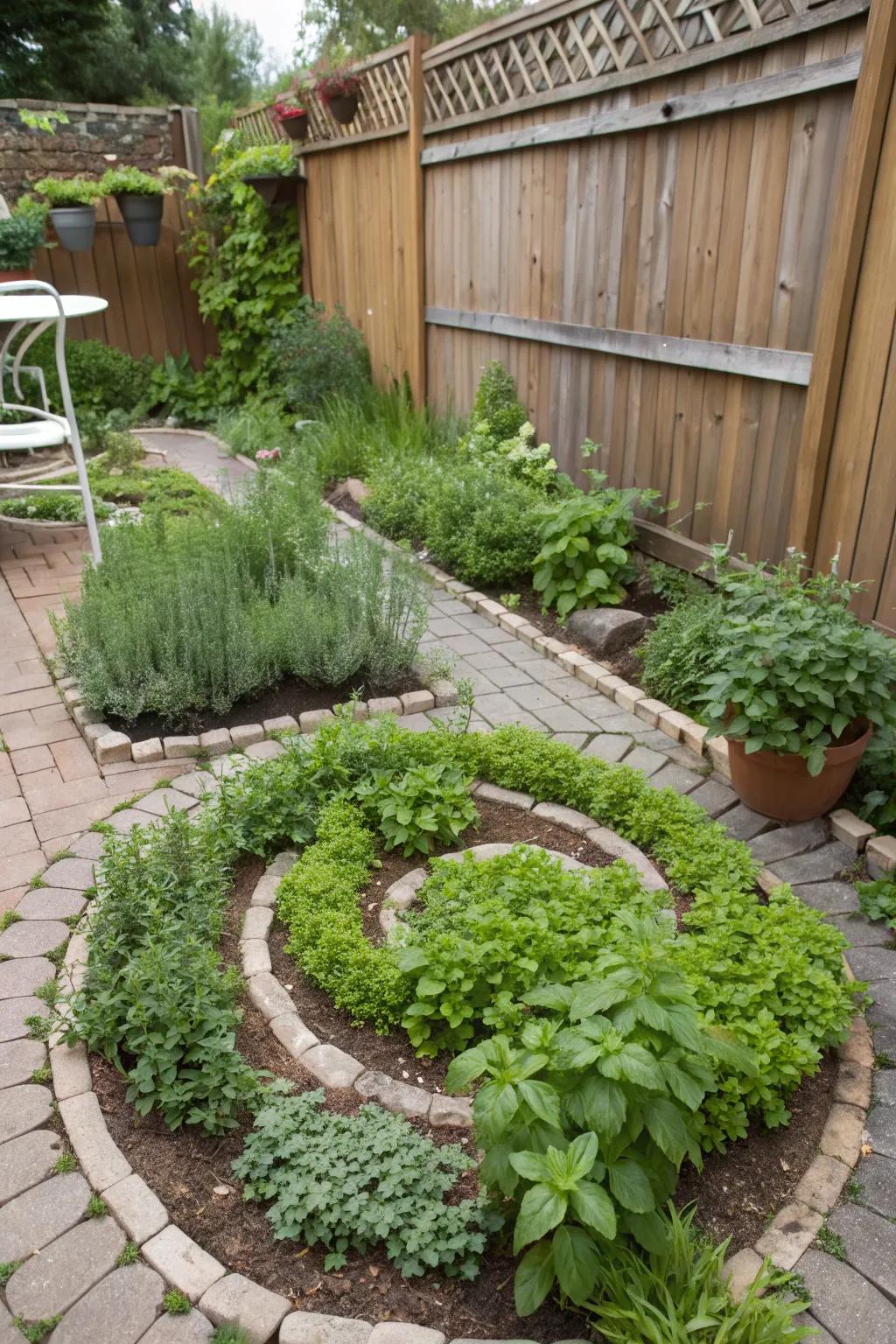
Create an herb spiral to make the most of vertical space while keeping herbs within easy reach. It’s one of my favorite projects for adding a unique touch to my garden.
Some handy options:
- Garden Spiral Herb Planter: Maximize your garden space with a stylish herb spiral planter, perfect for any garden corner.
- Organic Herb Seeds Variety Pack: Grow fresh, organic herbs easily at home with a diverse variety pack of herb seeds.
- Stone-Look Garden Edging: Enhance your herb spiral’s structure and aesthetics with easy-to-install stone-look garden edging.
13. Go Vertical with Trellises
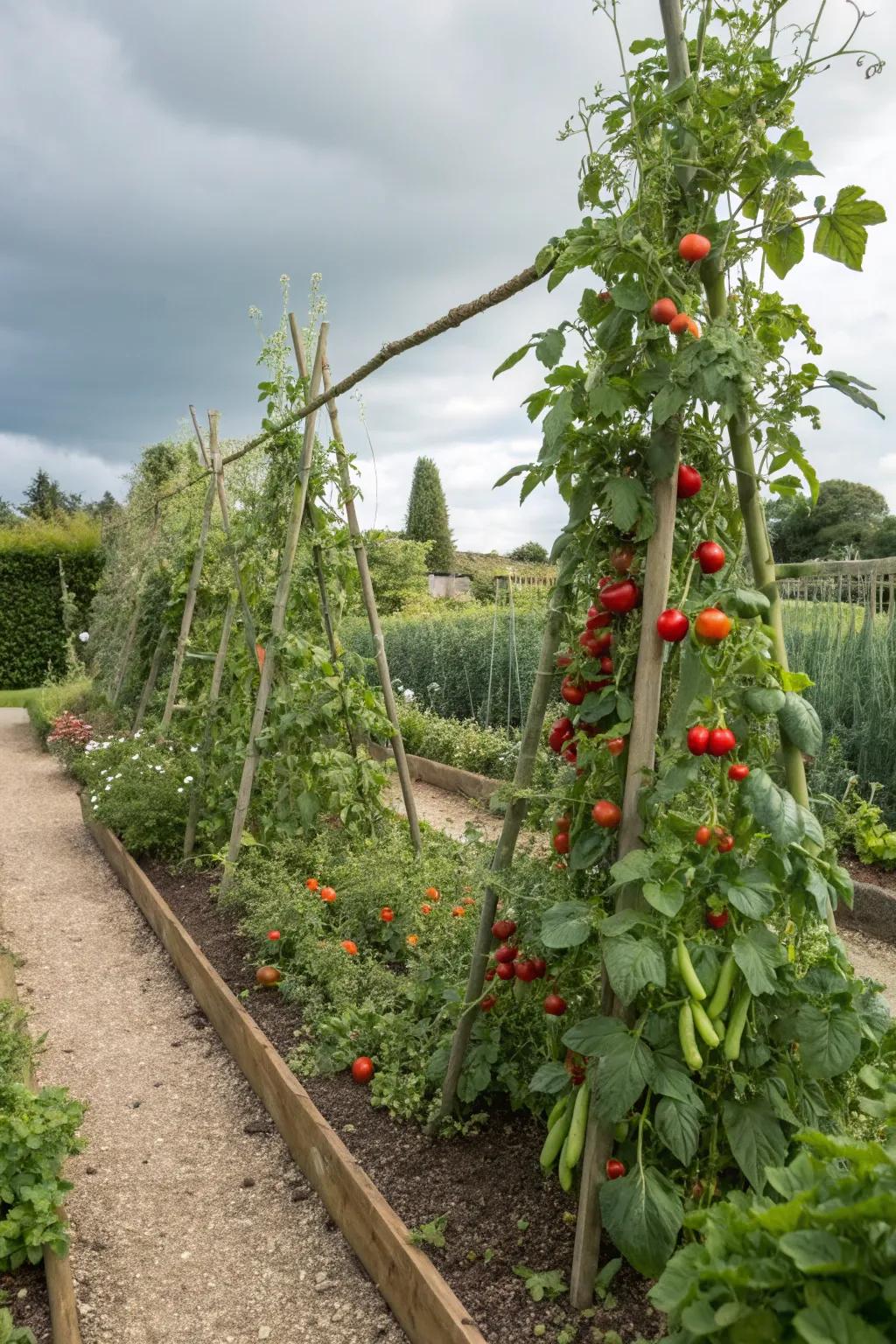
Maximize your space by incorporating trellises for climbing plants like tomatoes and peas. I’ve found that trellises not only save ground space but also add a beautiful vertical element to my garden.
Items that may come in handy:
- Expandable Garden Trellis: Elevate your garden with a sturdy, adjustable trellis ideal for supporting climbing plants.
- Heavy Duty Plant Support Cage: Enhance plant growth by setting up a heavy-duty cage perfect for tomatoes and peas.
- Wooden A-Frame Trellis Set: Add charm and functionality with an elegant wooden A-frame trellis for vertical gardening.
14. Integrate Water Features
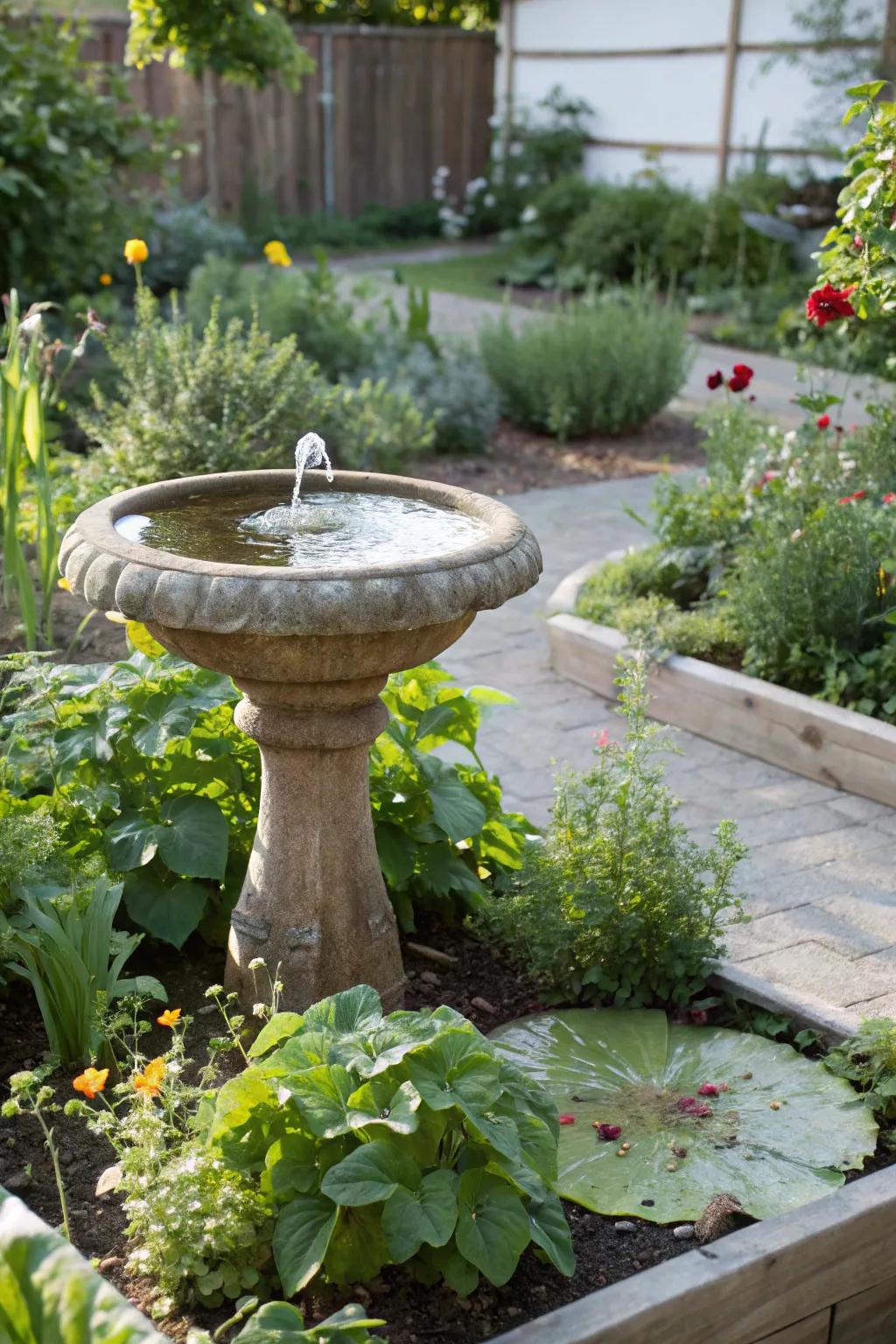
A small water feature can add tranquility and attract beneficial wildlife to your garden. I’ve found that a simple birdbath brings delightful visitors to my garden.
May just do the trick:
- Classic Stone Birdbath: Enhance your garden’s charm and attract birds with this elegant stone birdbath today.
- Solar Powered Water Fountain: Create a soothing ambiance effortlessly with this eco-friendly solar-powered fountain in your garden.
- Decorative Garden Water Feature: Bring tranquility and style to your outdoor space with this decorative garden water feature.
15. Mix It Up with Diverse Plantings
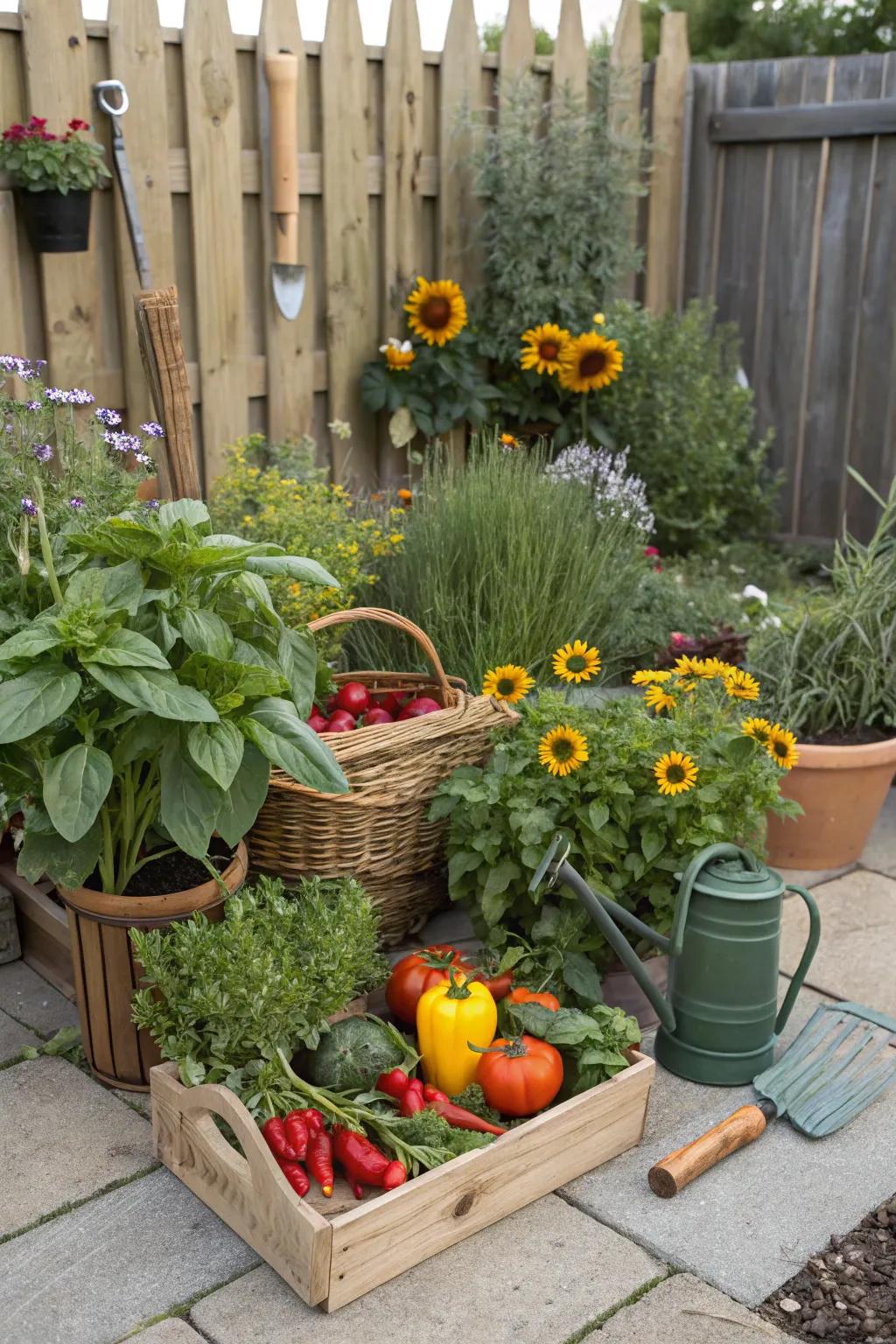
Combine herbs, vegetables, and flowers to create a mixed planting that’s as beautiful as it is productive. I love the burst of color and texture this brings to my garden.
Check these products out:
- Herb Planter Set: Grow aromatic herbs effortlessly; enhance your garden’s beauty and your dishes’ flavors.
- Garden Tool Set: Equip yourself with essential tools to cultivate a vibrant and productive mixed garden.
- Colorful Flower Seeds: Add bursts of color with easy-to-grow flowers, creating a picturesque and inviting garden space.
16. Incorporate Seating Areas
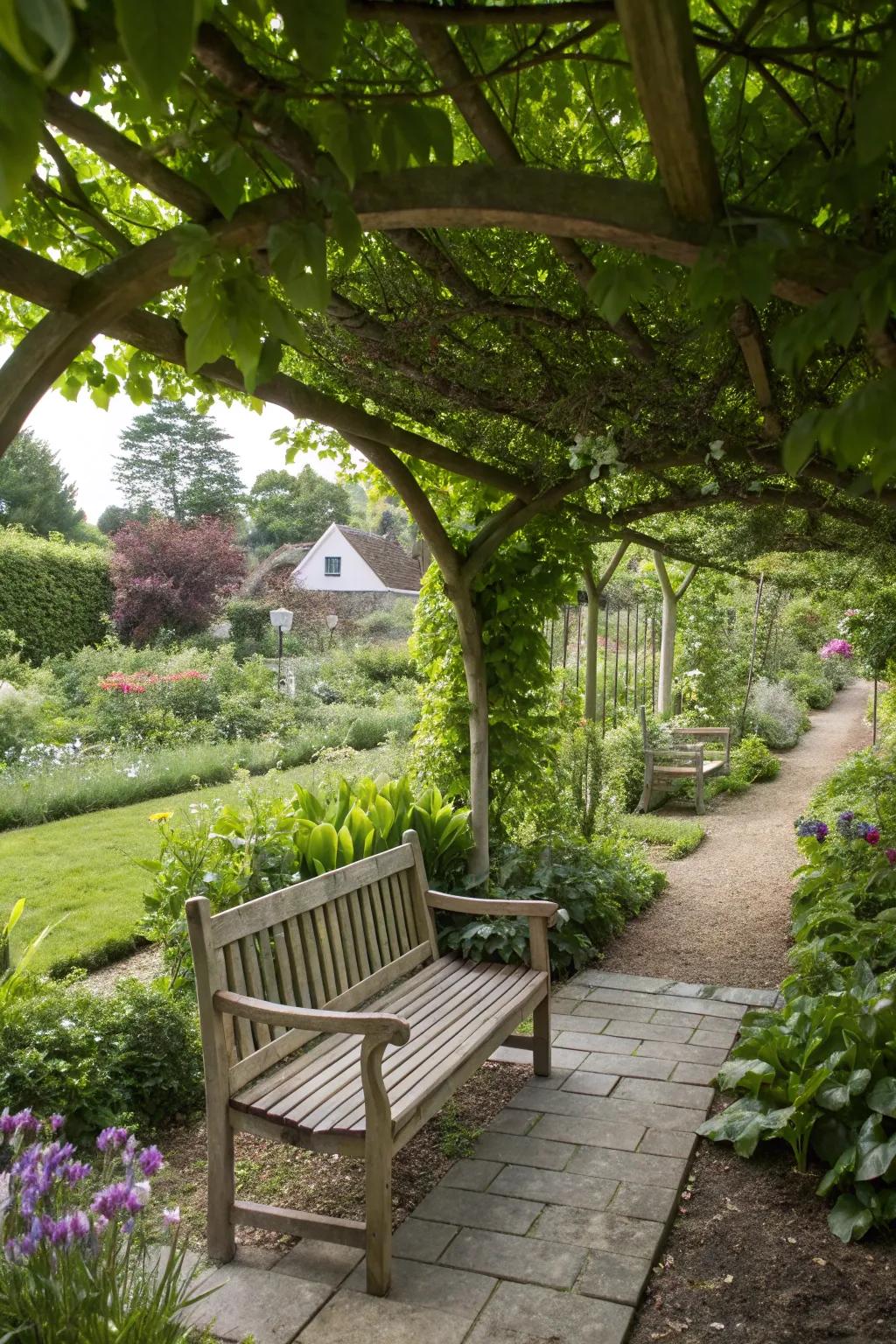
Add seating within your garden to create a peaceful spot to relax and enjoy your handiwork. A cozy bench in my garden is my favorite place to unwind with a cup of tea.
Maybe worth checking out:
- Wooden Garden Bench: Enhance your garden with a classic wooden bench, perfect for relaxation and enjoying nature.
- Garden Arched Pergola: Create a shaded, serene atmosphere with an arched pergola, perfect for climbing plants.
- Outdoor Patio Cushion Set: Add cozy comfort to your garden seating with durable, weather-resistant patio cushions.
17. Incorporate Edible Flowers
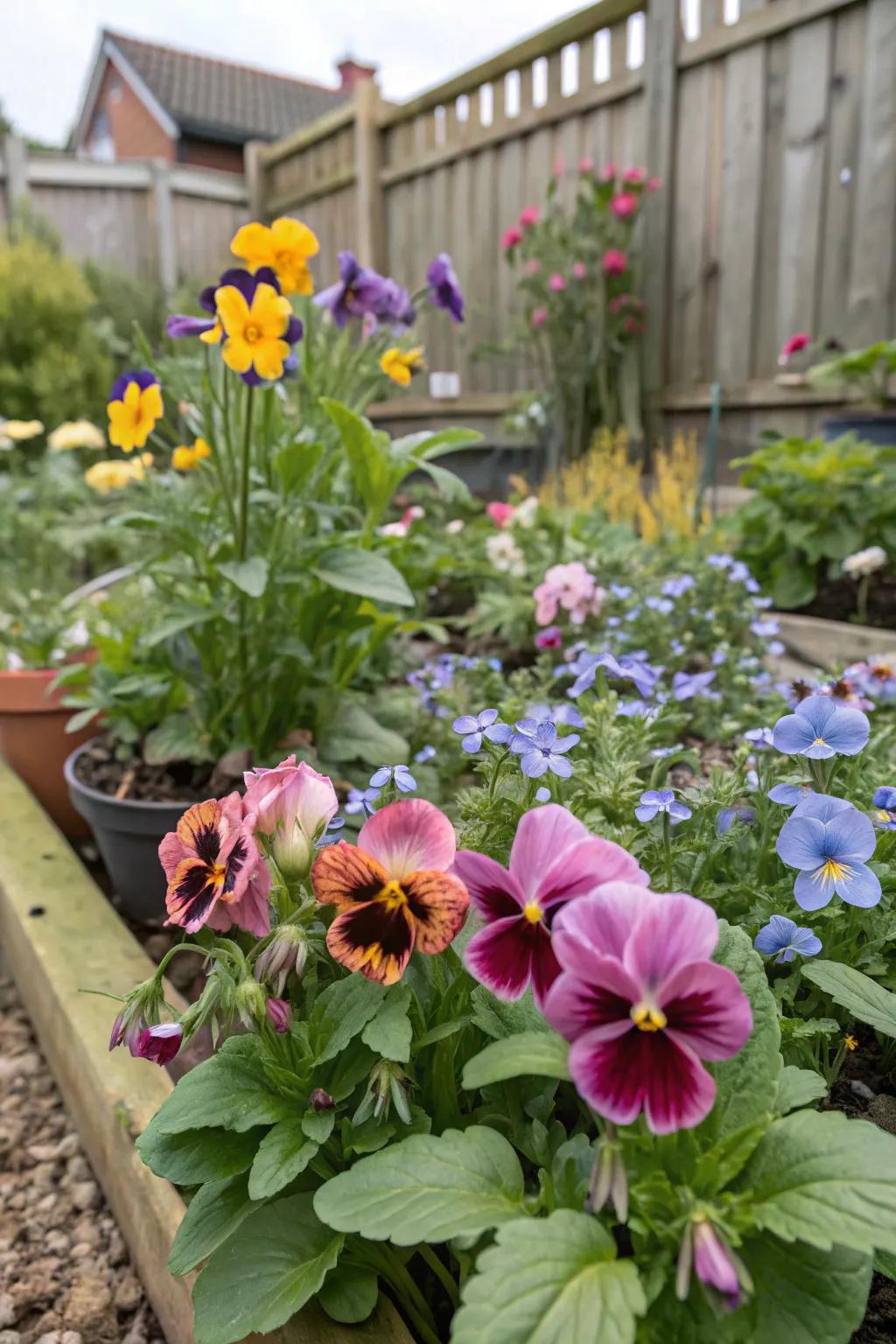
Add edible flowers for a pop of color and flavor to your garden. My guests always love the surprise of edible blooms in their salads.
Consider these options:
- Edible Flower Seed Kit: Grow your own vibrant edible flowers and enhance your dishes with color and flavor.
- Herb Garden Planter with Edible Flowers: Cultivate a beautiful herb garden with edible flowers for a surprising culinary twist.
- Organic Edible Flower Collection: Add organic edible flowers to your garden for delightful, colorful garnishes and culinary uses.
18. Vertical Wall Gardens
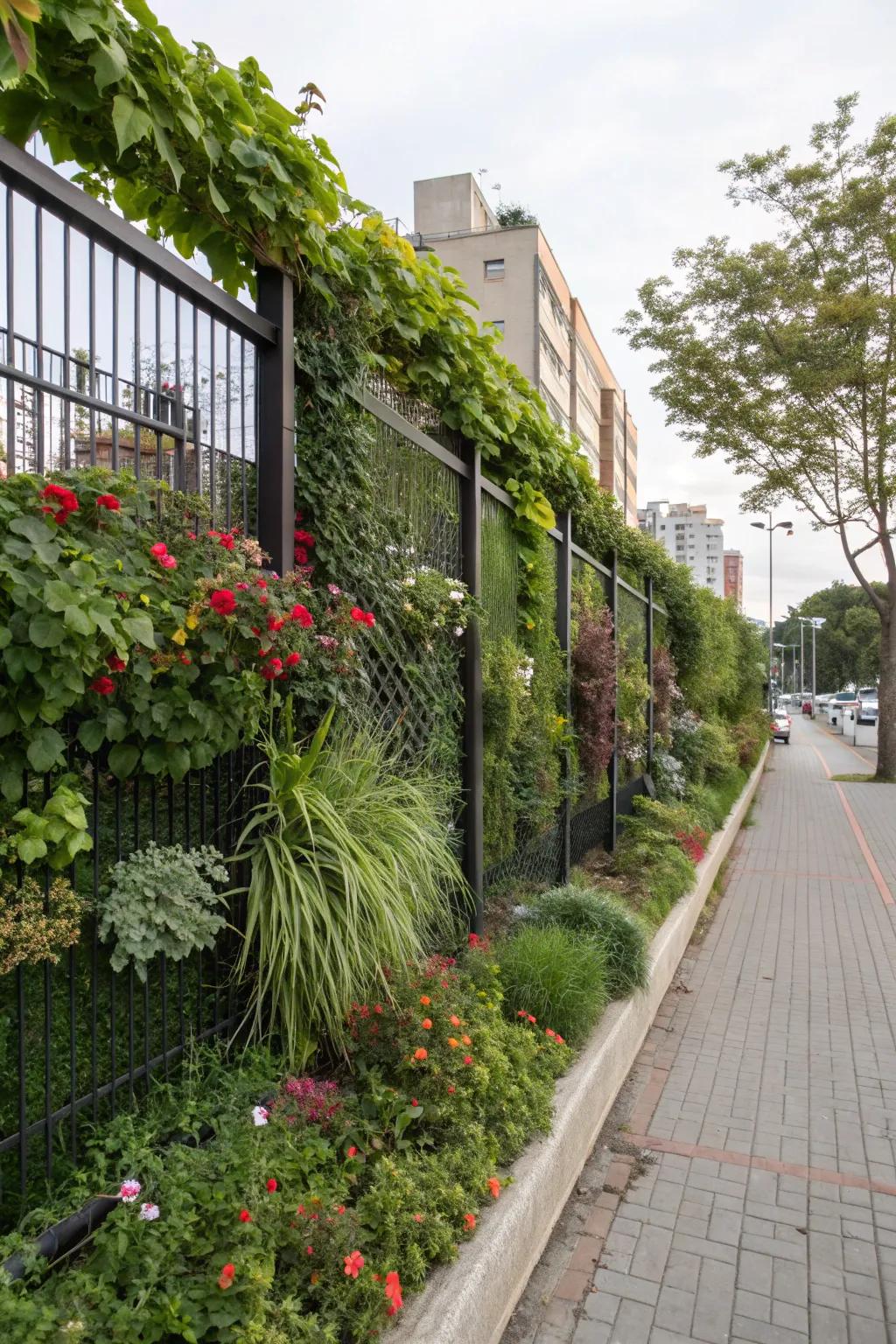
Transform a bare wall into a lush vertical garden, perfect for small spaces. I’ve turned my garden fence into a living wall, saving space and adding greenery.
Might be a good match:
- Vertical Garden Wall Planter: Transform your wall with these easy-to-use planters that optimize small spaces efficiently.
- Hanging Plant Pots for Wall: Enhance any plain wall by adding lush greenery with these stylish hanging pots.
- Wall Mounted Planter System: Create a living wall effortlessly using modular planters perfect for vibrant urban gardens.


